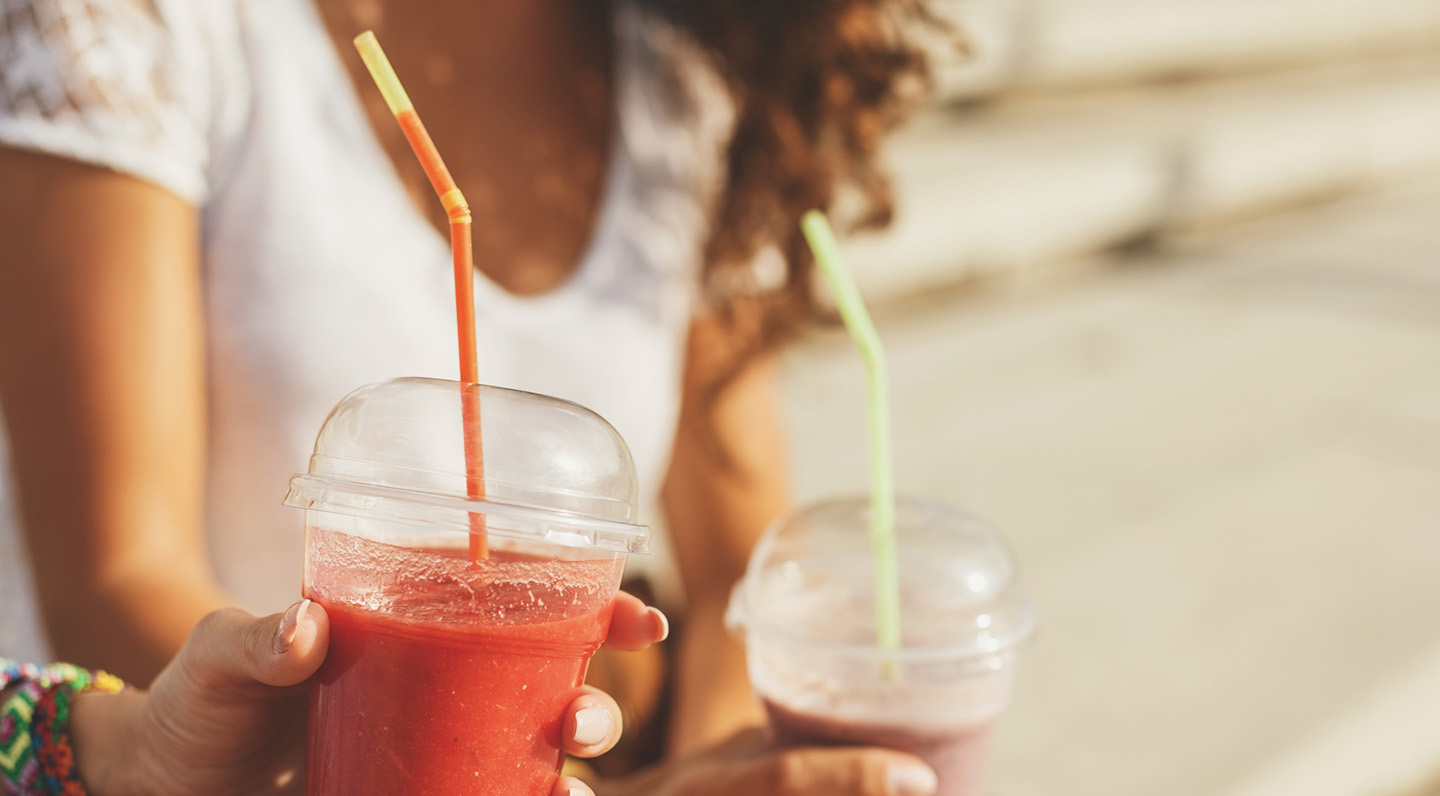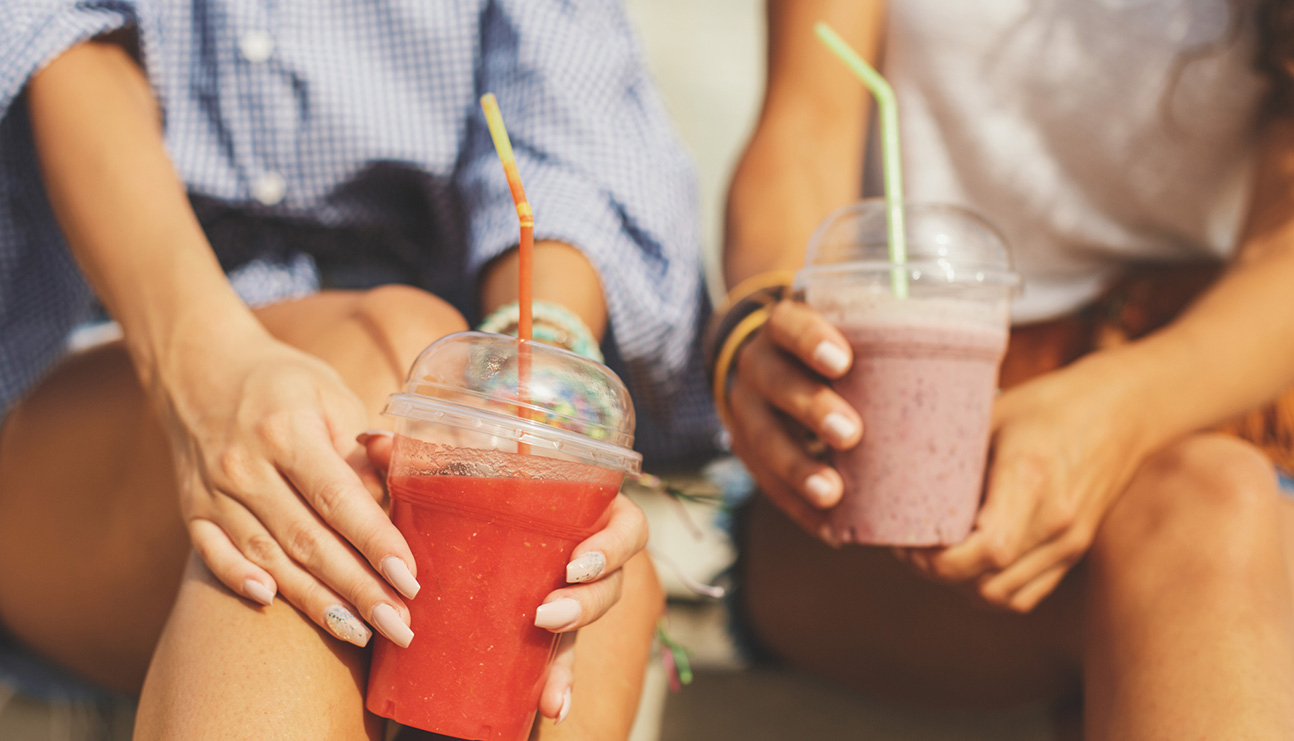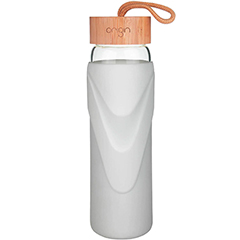The Ban On Single-Use Plastic Drinking Straws
Bekka Wiedenmeyer
Due to staggering statistics and the effect plastic straws have on the environment, many companies are working toward the elimination of plastic straws from their facilities. Coffee conglomerate Starbucks announced their new goal in a press release on July 9 that by 2020, single-use plastic straws will be eliminated from all 28,000 of its global locations. It’s a big move that people have reacted to in different ways. Starbucks is one of the most notable food and beverage retailer to commit to the global effort of reducing the use of plastic straws in everyday life, and ultimately, work toward phasing plastic out as a whole. In fact, if you have visited a Starbucks recently, you have probably noticed its straw replacement — a strawless lid that can most accurately be described as an “adult sippy cup lid” — on some drinks. But some have questioned whether or not Starbucks’ promise to eliminate one billion plastic straws from its stores will even make a dent on the much larger global impact plastic in general has on the environment. After all, what about the majority of other non-biodegradable materials that end up in landfills or in the ocean, like fishing nets and crab pots and non-recyclable plastic? If you have personally committed to reducing your own use of plastic straws in your everyday life, are you even making that much of an impact? The answer is still a resounding yes. Every day, Americans use about 175 million straws, and even though plastic straws like the ones Starbucks manufactures are intended to be recycled, most usually are mechanically sorted out because of their size and shape and end up in landfills and oceans anyways.

Starting today, keep a running tally of how many plastic straws you use weekly. Now think about how many of those straws are actually necessary for you to consume your beverage. The point isn’t to shame you into changing your ways, but rather to be aware of how much we use plastic straws on an everyday basis. When companies like Starbucks announce efforts to help reduce plastic waste by getting rid of plastic straws, they are targeting the widest group of people with the smallest bit of effort, and in the end, a little really does go a long way.
Are straws a majority of what actually ends up in landfills? No. As a matter of fact, plastic straws represent only about 0.03 percent of total plastic waste by mass.
Trevor Nace for Forbes summed it up really nicely when he wrote in an article post-Starbucks’ announcement that “it is the proverbial lowest hanging fruit in the plastic elimination effort.” By making this one small step, Starbucks is paving the way for future conservation efforts, and every little bit counts.
Starbucks is not the only company to commit to eliminating plastic straws, though it is so far the most notable. Ikea, Hyatt Hotels Corp., and Marriott International Inc. have all announced similar goals. Additionally, McDonald’s announced in June that it will begin to use paper instead of plastic straws in all of its United Kingdom and Ireland locations, the company also said they will try alternative methods of reduction in some markets, including Malaysia, by only offering straws upon request.

Every day, Americans use about 175 million straws.
Offering straws upon request is an important feature of both Starbucks’ and McDonald’s’ new policies. After Starbucks’ initial press release, several New York City-based disability rights’ activists raised concerns that eliminating plastic straws takes away a necessary instrument in the everyday lives of people with disabilities. In response, Starbucks said straws will still be offered upon request, no questions asked.

If you are committed to reducing your own personal use of plastic straws, or even on the fence about it, here are some helpful hints:
- Do some research and know your impact. National Geographic has very informative articles, like this one, that will make you more aware of the devastating effect plastic straws have on our ecosystems. The more you know, the more you can do to help.
- Use straws made from other sustainable material. We love stainless steel straws and glass straws for everyday use. You can order your own stainless straws here and glass straws here. Use them at home and pack them to use on the go.
- Consider investing in a reusable BPA-free beverage container. See a list of our favorites below.
Knowing why companies like Starbucks have made a push for the reduction and eventual elimination of single-use plastic straws sets you on the road to successful conservation and most importantly healthful living.









